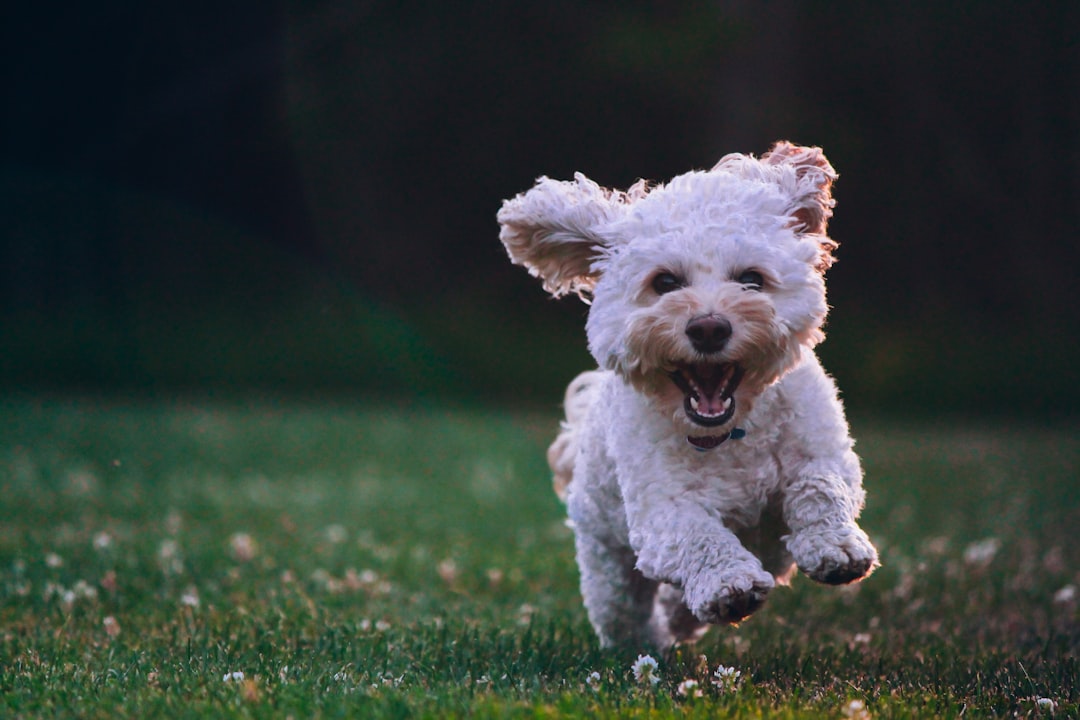Addressing Separation Anxiety in Dogs: Learn how to recognize the symptoms, understand the causes, and implement effective training techniques and practical tips to manage separation anxiety in dogs and ensure a happy, anxiety-free life for your furry companion.
Addressing Canine Separation Anxiety: Effective Strategies for a Happier, Calmer Dog
Introduction to Separation Anxiety in Dogs
Separation anxiety in dogs encapsulates a spectrum of behaviors that stem from a profound sense of fear and distress experienced by dogs when separated from their owners. This condition is far more complex than mere misbehavior or a sign of an untrained dog; it is a genuine psychological issue that can manifest in various disruptive and even destructive behaviors. Dogs suffering from separation anxiety may exhibit a range of symptoms including, but not limited to, trembling, incessant barking, destructive chewing of furniture or personal items, and excessive vocalization. These behaviors are indicative of the dog’s inability to cope with the absence of its owner, reflecting a level of emotional turmoilakin to panic. The bond that dogs form with their owners is deeply rooted in their social nature, often drawing parallels to the attachment behaviors seen between human caregivers and their children. This comparison underlines the intensity of the distress experienced by dogs with separation anxiety, emphasizing why understanding and addressing this condition is paramount for their emotional and physical well-being.
In tackling separation anxiety, it’s crucial to approach the condition with empathy and patience, recognizing that behaviors stemming from anxiety are not the dog’s fault. Effective training and behavior modification strategies are key tools in helping dogs learn to cope with being alone. Such interventions not only alleviate the symptoms of anxiety but also foster a stronger, healthier relationship between dogs and their owners. Building on a foundation of trust and security, systematic desensitization techniques, for instance, gradually acclimate the dog to the owner’s absence, reducing the anxiety provoked by separation. The goal of these interventions is not only to improve the immediate behaviors associated with separation anxiety but also to enhance the overall quality of life for both the dog and its owner, ensuring a harmonious coexistence. Through understanding, patience, and the right training approaches, it is possible to mitigate the effects of separation anxiety, reinforcing the bond between dogs and their owners and fostering a more secure and happy environment for all involved.
 Understanding the Symptoms and Triggers
Understanding the Symptoms and Triggers
Separation anxiety in dogs is a complex condition that manifests through various behaviors, indicating the animal’s distress when left alone or separated from their primary caregiver. This condition can be triggered by several factors, including but not limited to, changes in guardianship, shifts in the daily schedule, moving to a new residence, or alterations in household membership, such as the addition or loss of a family member. These triggers disrupt the dog’s sense of stability and security, leading to anxiety-driven responses.
Dogs experiencing separation anxiety exhibit a range of symptoms that are not only distressing for the animal but can also cause significant disruption in the household. Such behaviors include urinating and defecating indoors, incessant barking or howling, chewing on furniture or other items, digging at doors or windows, and attempting to escape from the house or yard. Notably, these symptoms often peak shortly after the owner’s departure, underscoring the immediate impact of separation on the dog’s well-being. Recognizing these symptoms and understanding their triggers are crucial steps in developing an effective treatment and management plan for dogs suffering from separation anxiety.
 Causes of Separation Anxiety in Dogs
Causes of Separation Anxiety in Dogs
Understanding the causes of separation anxiety in dogs is crucial for developing effective treatment strategies. Research indicates that certain factors significantly increase a dog’s risk of developing separation anxiety. These factors include gender, with male dogs being more predisposed to anxiety, and life history, such as dogs that have been sourced from shelters or experienced early separation from their litter. Additionally, dogs that have had limited exposure to varied environments or experiences outside of their home may also be at higher risk. These predispositions suggest that both genetic and environmental factors play a role in the development of separation anxiety, highlighting the complexity of addressing this condition.
Moreover, specific life events can trigger the onset of separation anxiety in dogs. Traumatic experiences, such as being rehomed or undergoing sudden changes in their living environment or routine, can be particularly distressing for dogs. For example, a dog that has been rehomed multiple times may develop separation anxiety due to the instability and inconsistency in their caregiving. Similarly, a significant change in the household, such as the loss of a family member or another pet, can also lead to anxiety symptoms. These triggers underscore the importance of stability and consistency in the lives of dogs. Recognizing and understanding these causes are the first steps toward effective management and treatment of separation anxiety. By addressing these root causes, dog owners can take a more informed and compassionate approach to helping their pets overcome anxiety, potentially reducing the need for more intensive interventions.
 Effective Training Techniques for Separation Anxiety
Effective Training Techniques for Separation Anxiety
Behavior modification strategies are at the forefront of effectively addressing separation anxiety in dogs, with systematic desensitization and counterconditioning proving particularly beneficial. Systematic desensitization involves gradually acclimatizing the dog to being alone by starting with very short departures and progressively increasing the time away. This method helps to diminish the dog’s anxiety response to the owner’s absence by slowly building their tolerance to solitude. Counterconditioning, on the other hand, aims to change the dog’s emotional response to being left alone, often by associating the departure with positive experiences, such as the introduction of a favorite toy or treat that they receive only when alone. These combined techniques not only reduce existing separation-related issues but, when applied consistently, can prevent future problems from developing.
In addition to these behavior modification techniques, incorporating mental stimulation into the dog’s daily routine can significantly mitigate symptoms of separation anxiety. Puzzle toys, for example, can keep a dog engaged and mentally occupied, reducing their focus on the owner’s absence. Establishing a consistent routine for the dog, involving regular feeding times, walks, and play sessions, can also foster a sense of security and predictability, further alleviating anxiety. It’s crucial for dog owners to adhere to clear, specific, and consistent training methods. This approach not only clarifies expectations for the dog but also reinforces their learning and adaptation process. For those seeking professional guidance in Richmond, Virginia, Off Leash K9 Training offers specialized programs designed to address separation anxiety, tailored to meet the specific needs of each dog and their owner. By leveraging expert training techniques and support, dog owners can more effectively manage and overcome separation anxiety in their pets. For more information on these specialized training programs, visit https://richmondvadogtraining.com/.
Practical Tips for Managing Separation Anxiety
Managing separation anxiety in dogs requires a compassionate approach that focuses on making the dog feel safe and secure even when they’re alone. One effective strategy is leaving behind an item that carries your scent, such as a piece of clothing. This can provide a comforting presence for your dog, reducing their anxiety and potentially preventing destructive behaviors that stem from stress. Additionally, engaging in activities that exhaust their energy before you leave can also help; a tired dog is often more relaxed and less prone to anxiety-induced behaviors.
Another key aspect of managing separation anxiety involves how you depart and return to your home. Gradually increasing the duration of your absences trains your dog to become accustomed to being alone, thereby reducing their anxiety over time. Incorporating specific pre-departure cues that do not trigger anxiety can also be beneficial. For example, changing the routine that leads up to your departure may help in preventing your dog from becoming anxious even before you leave. It’s also essential to maintain a calm and low-key demeanor when leaving and returning home, as overly emotional greetings can heighten the dog’s anxiety about your absence and presence. Remember, punishment for behaviors resulting from separation anxiety is counterproductive and can deepen your dog’s distress rather than alleviate it. For those seeking professional guidance, Off Leash K9 Training in Richmond offers specialized programs tailored to address separation anxiety, providing both the dog and the owner with strategies to manage and overcome this challenge. Discover more about their services at https://richmondvadogtraining.com/.
Professional Support: Dog Training Programs and Medication
When the challenge of managing separation anxiety in dogs transcends the efficacy of home-based interventions and behavior modification techniques, the expertise of professional trainers and behaviorists becomes invaluable. Off Leash K9 Training in Richmond, Virginia, stands out for its specialized approach in addressing separation anxiety, offering private lessons and behavior consultations that are meticulously tailored to the unique disposition and needs of each dog. Their training programs are designed not only to alleviate the symptoms of separation anxiety but also to strengthen the bond between dogs and their owners, ensuring a harmonious relationship and an improved quality of life for both [Customer Product Context].
For dogs experiencing severe cases of separation anxiety, the integration of medical treatment alongside behavior modification programs can be a critical component of a comprehensive treatment plan. Medications such as clomipramine and fluoxetine have been shown to provide significant relief when used in conjunction with targeted behavior modification strategies. However, it’s paramount to consult with a veterinarian or a veterinary behaviorist to ensure that any prescribed medication is appropriate for the dog’s specific condition and to monitor for potential side effects. Off Leash K9 Training collaborates closely with veterinary professionals to provide a holistic approach to treating separation anxiety, combining their expertise in behavior modification with medical insights to achieve the best outcomes for dogs and their families. For more information on how Off Leash K9 Training can help manage separation anxiety in dogs, visit https://richmondvadogtraining.com/.
Natural Remedies and Additional Support
Incorporating natural remedies into the care regimen for dogs with separation anxiety can serve as a comforting bridge to traditional treatments, offering a gentle approach to easing their distress. Soothing music, for example, can act as an auditory hug for anxious pets, enveloping them in sounds that distract and calm their nervous system. Similarly, creating a safe space—a dedicated area in your home where your dog feels secure and relaxed—can significantly mitigate their anxiety. This space can include their favorite bed, toys, and even items that carry your scent, providing a comforting presence in your absence. Dog-appeasing pheromone diffusers, which mimic the pheromones mother dogs produce to comfort their puppies, have been scientifically proven to reduce separation-related behaviors and promote a sense of well-being in dogs.
Beyond these immediate interventions, establishing a structured routine plays a pivotal role in managing separation anxiety long-term. Consistent schedules for feeding, walks, playtime, and rest can help dogs feel more secure, as predictability can significantly reduce their stress levels. Regular exercise and mental stimulation are just as crucial; they not only keep your dog physically fit but also mentally engaged, reducing the likelihood of anxiety-driven behaviors. Activities such as puzzle toys, scent work, or agility training can provide both physical exertion and mental challenge, ensuring that your dog is content and tired, which is particularly beneficial before periods of separation. For those seeking additional support, Off Leash K9 Training in Richmond, Virginia, offers a comprehensive approach to managing separation anxiety, combining professional training techniques with tailored solutions to enhance the bond between you and your furry companion. Discover more about their effective training programs by visiting https://richmondvadogtraining.com/ for additional details and support.
Conclusion: Ensuring a Happy, Anxiety-Free Life for Your Dog
Addressing separation anxiety in dogs demands a multifaceted strategy that not only involves adjustments at home but also seeks the expertise of professional trainers. It’s crucial to recognize that each dog is unique, requiring tailored approaches to mitigate the stress and anxiety they experience when left alone. Off Leash K9 Training, based in Richmond, Virginia, excels in providing personalized training sessions that focus on building a stronger, more trusting relationship between dogs and their owners. Their programs are designed to tackle the root causes of separation anxiety, incorporating systematic desensitization techniques alongside positive reinforcement to promote calm and obedient behavior.
Furthermore, the journey to overcoming separation anxiety is one that necessitates patience and understanding from dog owners. It’s a process that can significantly improve with the support and guidance of experienced trainers who are familiar with the challenges dogs face. Off Leash K9 Training’s dedicated team offers not just training but also ongoing support to ensure that progress is made and maintained. For those seeking effective solutions to their dog’s separation anxiety, exploring the services offered by Off Leash K9 Training is a step towards fostering a happier, more relaxed environment for their pets. To learn more about how they can assist in managing separation anxiety and to explore their comprehensive training programs, visit Off Leash K9 Training, Richmond.


 Understanding the Symptoms and Triggers
Understanding the Symptoms and Triggers Causes of Separation Anxiety in Dogs
Causes of Separation Anxiety in Dogs Effective Training Techniques for Separation Anxiety
Effective Training Techniques for Separation Anxiety